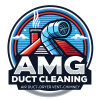Inspection is the backbone of safe and effective exhaust maintenance. In Somerville, New Jersey, a meticulous inspection routine helps kitchens verify cleanliness, detect hazards early, and document work that protects staff and guests. Whether you manage a neighborhood eatery or a multi-station cafeteria, this inspection-focused guide covers what to look for before, during, and after service—so you know your hood, ductwork, and fan are truly clean. When inspection reveals issues beyond routine wipe-downs, schedule professional kitchen exhaust hood cleaning to address hidden sections and restore safe conditions.
Pre-Cleaning Inspection
Begin by surveying the entire system from the hood to the fan. Note visible grease on the hood face, around baffle filter frames, and along seams. Open accessible panels to check for deposits in elbows and vertical runs. Observe fan noise and vibration; unusual sounds may indicate mechanical problems or airflow restrictions caused by buildup.
What to Document
- Photos of the hood interior, filters, and accessible duct sections.
- Conditions on the roof around the fan curb, including any grease discharge.
- Presence and condition of fan hinges and access panels.
- Any corrosion, loose fasteners, or damaged seals.
- Fire suppression nozzle placement and overspray risks.
Inspection Tools and Aids
- Bright flashlight for interior seams and corners.
- Inspection mirror for elbows and tight spaces.
- Non-contact thermometer to identify hot spots indicating airflow issues.
- Small scraper to test residue thickness in inconspicuous areas.
- Camera or mobile device for documentation.
Indicators That Cleaning Is Due
- Visible film on baffles that returns quickly after wipe-downs.
- Drips near the hood face or onto cooking surfaces.
- Smoke lingering around the cookline rather than being captured.
- Fan noise, vibration, or reduced draw at typical speeds.
- Grease evidence on the roof membrane or near the fan discharge.
During-Service Inspection
As cleaning progresses, verify that access panels are opened and hard-to-reach sections are addressed. Check that scraping and degreasing target rivets, seams, and corners rather than just open surfaces. Confirm that the fan is hinged, safely opened, and thoroughly cleaned inside housing and on blades.
Post-Cleaning Verification
Quality control after service is essential. Use a flashlight to examine the plenum, duct interiors near access points, and the fan housing. Feel for residue with a gloved hand; surfaces should be free of tacky films. Inspect baffle filters for complete cleanliness and correct orientation. Confirm that grease cups are empty, seated properly, and not leaking.
Roof and Exterior Checks
Grease on the roof can damage membranes and create slip hazards. After cleaning, verify that containment devices captured discharge effectively, that overspray was avoided, and that pathways to and from the fan are clear. Note any damage to flashing, wiring, or mounts and arrange repairs promptly.
Common Inspection Findings and Fixes
- Missing hinges on the fan: Install hinges to enable safe, thorough cleaning and inspection.
- Seized or damaged access panels: Repair to improve coverage and reduce future labor.
- Bent or corroded baffle filters: Replace to restore capture efficiency and drainage.
- Recurring roof grease stains: Upgrade containment and verify fan alignment.
- Persistent vibration or noise: Inspect belts, bearings, and balance; resolve before damage escalates.
Documentation That Tells the Whole Story
Organized records protect your operation. Include service dates, photos, areas cleaned, and any recommendations. Keep logs accessible to staff and leadership so decisions about scheduling and repairs are transparent. When audits occur, strong documentation demonstrates control and care.
Training Your Team to Inspect
Teach staff to notice subtle changes in airflow, temperature, and odors. Encourage quick reporting when drips appear near the hood face or when filters show unusual residue after routine wipe-downs. A culture of attention prevents small problems from becoming significant hazards.
Mid-Cycle Inspections
Between deep cleanings, perform quick spot checks on filters and easily accessed sections. If conditions are changing—seasonal menu shifts, increased volume, or new equipment—adjust the schedule to stay ahead of buildup. Bringing in expert kitchen exhaust hood cleaning at the right moment prevents hardened accumulations that cost more time and disrupt operations.
Frequently Asked Questions
Q: How often should we inspect our system? A: Conduct daily visual checks at the hood line and scheduled deep inspections at intervals that match your volume and menu.
Q: What is the most overlooked area? A: Duct elbows and vertical runs without access panels are commonly missed and require attention.
Q: Can we rely on exterior shine as proof of cleanliness? A: No. Internal surfaces must be verified through access panels and fan housing checks.
Q: How do we reduce roof damage from grease? A: Use proper containment, ensure the fan is aligned, and clean up any discharge immediately.
Q: What should we include in reports? A: Date, personnel, areas inspected, photos, findings, and repair recommendations.
Q: Who should perform deep inspections? A: Staff can handle daily checks, but thorough inspections are best performed by trained professionals with proper access and equipment.
Strengthen Safety and Compliance
Inspection-driven maintenance keeps Somerville kitchens safer, more efficient, and ready for scrutiny. Establish a routine that pairs daily observations with scheduled deep evaluations, document your findings, and correct issues quickly. When full-system service is due, arrange professional kitchen exhaust hood cleaning to ensure your hood, ducts, and fan meet a high standard of cleanliness and performance.

